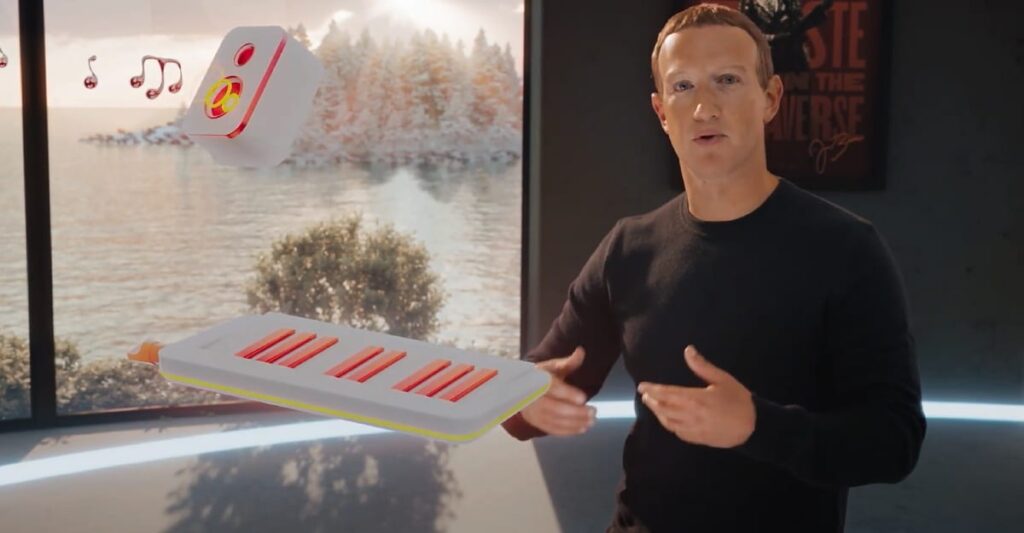Mark Zuckerberg is intensifying Meta’s focus on metaverse initiatives, including hiring experts in generative artificial intelligence. Recently, Meta showed a demo of its latest technology, Hyperscape, which turns a smartphone’s camera into access to photorealistic environments of the metaverse. According to Zuckerberg, this tool allows smartphones to scan 2D spaces and transform them into hyperrealistic metaverse backgrounds, allowing users to explore and interact within these digital worlds.
What is Hyperscape
During a recent demo of Hyperscape, Zuckerberg described it as “pretty wild.” Explaining the concept, the tech mogul said, “We’re working on bringing photo-realistic avatars to the metaverse. We also bring photo-realistic spaces to the metaverse. We call this Hyperscape. You can use your phone, scan the room and recreate it.”
Meta uses a 3D volume rendering technique called ‘Gaussian Splatting’, which uses cloud rendering and streaming. This technology turns the spaces scanned by smartphone cameras into immersive, virtually visible environments.
Jonathon Luiten, a Meta officer and researcher in the company’s metaverse division, Reality Labs, described Hyperscape as a technology that allows users to create “high-fidelity replicas” of their physical environments and embody them in virtual reality (VR).
In a demonstration posted to Hyperscape, multiple photos taken by a smartphone camera were seamlessly integrated into a high-definition video format. Luiten shared a video on his X profile showing how Hyperscape stitches these images together to create a realistic environment.
Currently, the Hyperscape app is only available on Meta’s Quest 3 headset, which is priced at $429.99 (roughly Rs. 36,098) for the 128GB variant. It runs the specially designed Meta Horizon OS. The technology was first unveiled at the Meta Connect 2024 event on September 25.
Meta’s encounter with the Metaverse
In September 2021, Zuckerberg changed Facebook to Meta, signaling his commitment to metaverse technology.
Supported by blockchain networks, metaverse ecosystems are photorealistic virtual representations of real-world objects. According to Meta, these ecosystems have the potential to transform digital interactions. Platforms like The Sandbox and Decentraland allow users to participate as avatars, allowing them to play games, collect NFTs, and hold virtual meetings and social gatherings in hyper-realistic environments.
Since it was founded in 2022, Meta’s Reality Labs unit has repeatedly posted losses. The unit lost $13.7 billion (roughly Rs. 1,12,200 crore) in 2022, with a subsequent loss of $46.5 billion while generating nearly $11 billion (roughly Rs. 91,744 crore) in revenue in the fourth quarter of 2023.
Despite these financial setbacks, Zuckerberg remained true to his belief that metaverse technology would become popular in the coming times. Zuckerberg’s bet on the metaverse initially looked like a colossal mistake, wiping over $100 billion (roughly Rs. 8,39,113 crores) from his net worth. However, according to recent figures on the Bloomberg Billionaires Index, Zuckerberg’s net worth has grown nearly six-fold in less than two years to $201 billion (roughly Rs. 16,86,617 crore), the first time he has crossed the $200 billion mark (roughly Rs. . 16,78,226 crore) — making him the fourth richest individual in the world.


